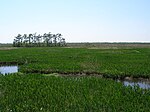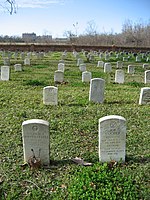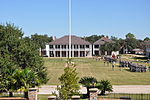Rene Beauregard House
The Malus-Beauregard House, previously known as the Rene Beauregard house, is a home built in 1832-1833 and significantly altered in 1850's to a Greek Revival style overlooking the Battle of New Orleans battlefield. Located in St. Bernard Parish about 6 miles east of the City of New Orleans and adjoining the field of Chalmette where the Battle of New Orleans was fought in 1815. The house is named after its first and last owners and served as a country residence for several wealthy families during the 19th century. Its latest use was the Visitor's Center for the Chalmette Battlefield but has been closed since Hurricane Katrina due to its poor condition. It is not considered of historical importance due to it being located on the famous battlefield but unrelated and built after the event. No restoration efforts are planned.
Excerpt from the Wikipedia article Rene Beauregard House (License: CC BY-SA 3.0, Authors).Rene Beauregard House
Jean Lafitte Parkway,
Geographical coordinates (GPS) Address Website Nearby Places Show on map
Geographical coordinates (GPS)
| Latitude | Longitude |
|---|---|
| N 29.94064 ° | E -89.99418 ° |
Address
Chalmette Battlefield
Jean Lafitte Parkway
70043
Louisiana, United States
Open on Google Maps









